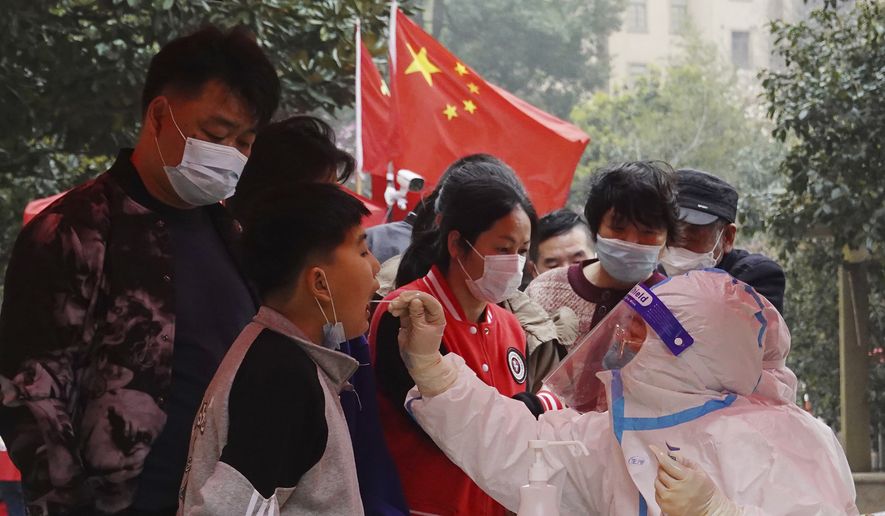China is battling some of its worst COVID-19 outbreaks since the start of the crisis, forcing Beijing to shutter a major manufacturing hub in the south while residents of a northern province have been told not to leave or travel.
The lockdown in Jilin Province, which borders Russia and North Korea, is one of the most severe since Wuhan was closed off from the rest of the country in late 2019. Major automakers were forced to shutter operations in the area, according to CNBC.
The outlet said Shanghai, the major coastal city, reverted school classes to online status as neighborhoods face mass testing and lockdowns until they test negative.
Meanwhile, Foxconn suspended operations in the southern city of Shenzhen, a major manufacturing hub that borders hard-hit Hong Kong, according to multiple reports.
Mainland China reported 1,437 new cases on Sunday, meaning there are over 8,500 active infections, the most since March 2020.
Those are relatively low numbers — the U.S. is practically celebrating 34,000 cases per day, its lowest level since July — but Bejing has maintained a zero-COVID strategy that seeks to stamp out all infections through mass testing and draconian lockdowns.
The surge in Hong Kong, which has special administrative status, appears to have plateaued, but its death rate remains high, taxing hospitals and morgues and representing a black eye for the central communist government. A viral photo from one Hong Kong hospital showed dead patients in body bags next to living ones receiving care.
“In recent weeks, the number of confirmed COVID-19 cases has skyrocketed in Hong Kong, Shanghai, and a dozen other Chinese provinces, leading to mass lockdowns and record hospitalizations. Beyond exposing the failings of China’s zero-COVID strategy, these disruptions will likely weigh heavily on China’s economic growth and potentially jeopardize Chinese President Xi Jinping’s governing narrative in the lead-up to the 20th Party Congress this October,” said Craig Singleton, a senior China fellow at the non-partisan Foundation for Defense of Democracies.
Scientists are worried that China’s lack of natural immunity to the virus or insufficient protection from domestic vaccines will leave the world’s most populous nation exposed to outbreaks moving forward.
Mr. Singleton noted that while 85% of the country is vaccinated, the Chinese relied on shots from Sinovac and Sinopharm that are less effective than the messenger-RNA ones being used by western nations. Also, fewer than half of Hong Kong residents over age 70 refused vaccination over concerns around side effects or the vaccines’ efficacy.
Rolling lockdowns could depress industrial output, “further accelerating China’s already rapid economic slowdown,” Mr. Singleton said. “Lockdowns could also exacerbate China’s record unemployment rate, which has remained above five percent for several quarters despite the Chinese government’s aggressive attempts to stimulate the economy.”
He said Chinese censors will likely tamp down on anything that portrays Mr. Xi in a negative light, however, while trumpeting mitigation measures.
Chinese Vice Premier Sun Chunlan suggested over the weekend that the zero-COVID strategy would continue for now.
They also worry the situation provides a large breeding ground for new variants that could set back the global fight even as the U.S. and western nations try to manage COVID-19 as another infectious disease in the background of society.
Hong Kong has reported nearly 3,780 COVID-19 deaths and almost 700,000 cases since late January, according to the New York Times, putting pressure on city Executive Carrie Lam to wrangle the crisis.
Ms. Lam said Monday the mainland sent 75 doctors and nurses to deal with the surge and 300 will follow.
At the same press conference, she said COVID-19 pills from Merck had arrived and a similar drug from Pfizer known as Paxlovid would arrive shortly, according to Caixin Global, a Chinese outlet.
For more information, visit The Washington Times COVID-19 resource page.
• Tom Howell Jr. can be reached at thowell@washingtontimes.com.




Please read our comment policy before commenting.